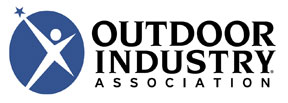Assistant Editor's Note: This piece was written by the Outdoor Industry Association, in cooperation with ATTA, and is now part of their Resource Library. It is posted here with their permission.
 Adventure travel is already a multi-billion dollar business. But according to the Adventure Travel Trade Association, it may just be hitting its stride.
Adventure travel is already a multi-billion dollar business. But according to the Adventure Travel Trade Association, it may just be hitting its stride.
“Tourism bureaus only now are pouring money into adventure travel,” notes ATTA President Shannon Stowell. “For outdoor brands right now, it’s still largely unexplored territory.”
Larger adventure travel promotion budgets mean millions of new consumers will be introduced to outdoor recreation in coming years, providing a huge source of growth for outdoor brands. ATTA describes the three pillar attractions of adventure travel as physical activity, interaction with the environment and cultural exchange. Eight of ten adventure travel operators surveyed offer hiking and walking, while 54 percent offer wildlife viewing and 53 percent offer visits to national parks, according to a survey of 300 ATTA member companies.
“These are people who are absolutely not walking into your stores,” said Stowell. “They have no idea what a breathable, waterproof jacket is.”
With that in mind, ATTA and outdoor brands and retailers contacted by OIA WebNews offer the following tips for partnering with adventure travel companies and outfitters.
Outfit the outfitter. Vendors can offer to provide outfitters and/or adventure travel companies with co-branded apparel, backpacks and other gear for their guides. Not only does this get your brand in front of potential customers, but it extends your family of brand ambassadors. Like athletes, guides can generate marketing content, including product endorsements, blog entries and videos. Osprey recently sold 300 packs to a Norwegian adventure travel firm and Teva has outfitted raft guides with its sandals.

Co-brand a sweepstakes promotion. Brands can partner with a local adventure travel firm and complimentary outdoor brands to develop a sweepstakes promotion around a destination or adventure. This keeps costs low as each partner contributes gear, travel, accommodations, guide services and media coverage at cost. Partners can share production costs, including a co-branded micro-website and associated media, while retaining control over their customer lists. Again, these arrangements offer an authentic source of content, provide exposure to your like-minded partners’ customers and can reap significant media coverage.
Adventure travel presents a different set of opportunities for retailers. REI and Backwoods operate their own adventure travel businesses, and Eastern Mountain Sports has opted to offers trips via a partnership with Adventureus.com. Smaller, independent specialty retailers, meanwhile, say it’s difficult to impossible to earn a profit reselling other company’s guided adventures. Until that changes, here are some alternative strategies retailers can consider for tapping the adventure travel market:
- Poll customers about their travel plans. Get a sense of where your existing customers are going and make sure they know you stock products that are appropriate for the most popular destinations and adventures. To engage customers, provide real-time updates of the survey on your web site.
- Provide a gear list. Offer to promote a local outfitter and/or adventure travel company in your store, on your website or in other marketing vehicles. Offer to dial in gear lists for their particular adventures and/or destinations. In exchange, ask that they distribute the lists with a coupon for your store to their customers.
- Think inbound. The big growth in adventure travel will come from abroad as newly wealthy consumers from emerging markets — Brazil, Russia, India and China — opt to visit America’s iconic landscapes. Many of these consumers will prefer to buy their gear in the United States immediately prior to their adventure. Retailers located near major adventure travel destinations may have an opportunity to partner with local outfitters and tour companies to serve these customers.
- Offer pre-trip orientation workshops. Host orientation sessions for local adventure travel firms’ outbound groups with overviews of relevant categories for the destinations. That might include mosquito nets for Costa Rica and sunglasses for the Sahara.
- Offer one-on-one consulting. Offer to schedule one-on-one appointments with an appropriate staff expert to help individuals or families outfit their next adventure. Ski shops have used this approach to sell thousands of dollars in gear to novice skiers and their families.
- Leverage your personal adventures. Midwest Mountaineering abandoned its in-store adventure travel centers after finding the margins on selling trips to the north shore of Lake Superior were too slim. Instead, owners Rod and Sharon Johnson share what they’ve learned from their own travels in presentations aimed to teach others how to organize low cost trips to adventure travel destinations like Mount Kilimanjaro. “We will do 30 presentations on those trips and build trust with the customer, establish our expertise and distinguish ourselves from the big box stores,” said Johnson.
